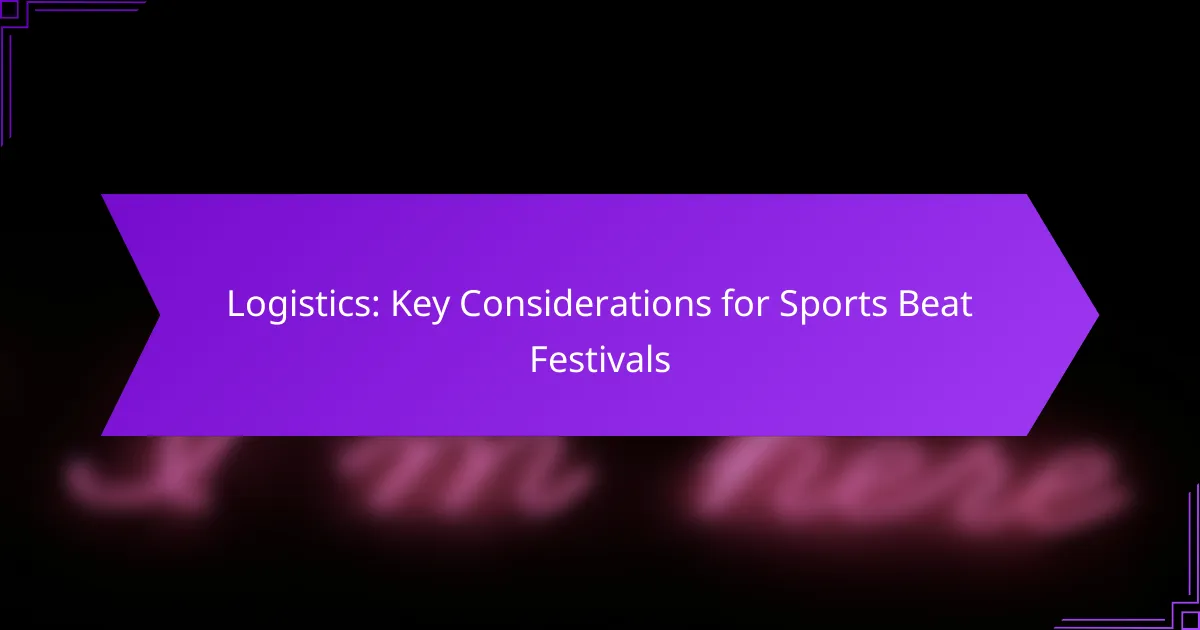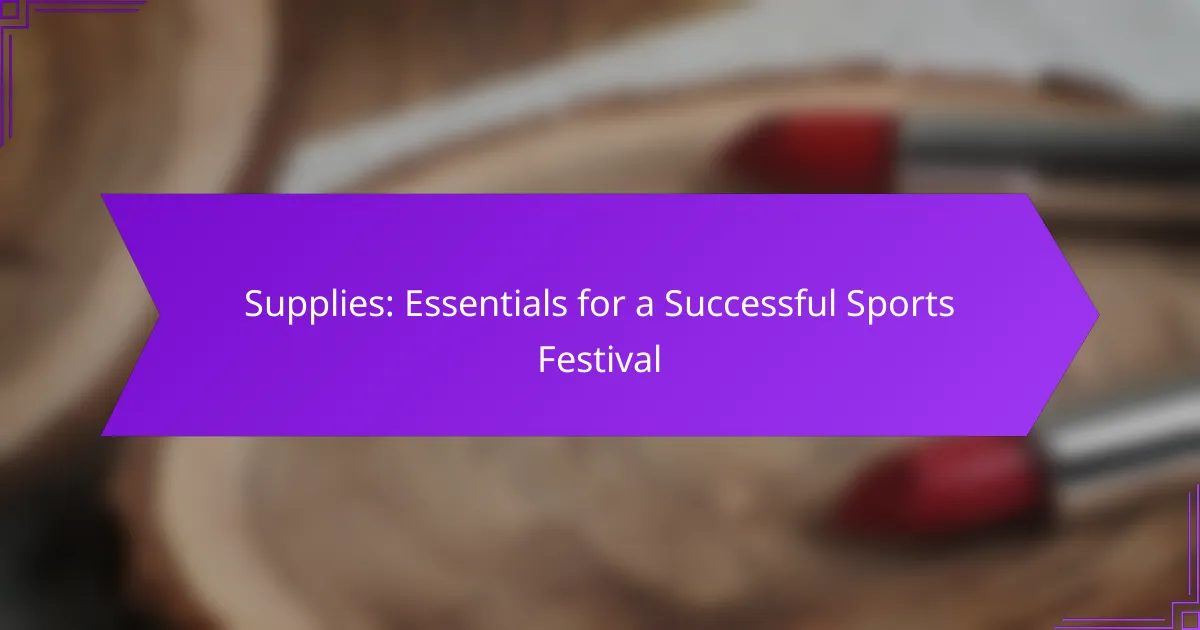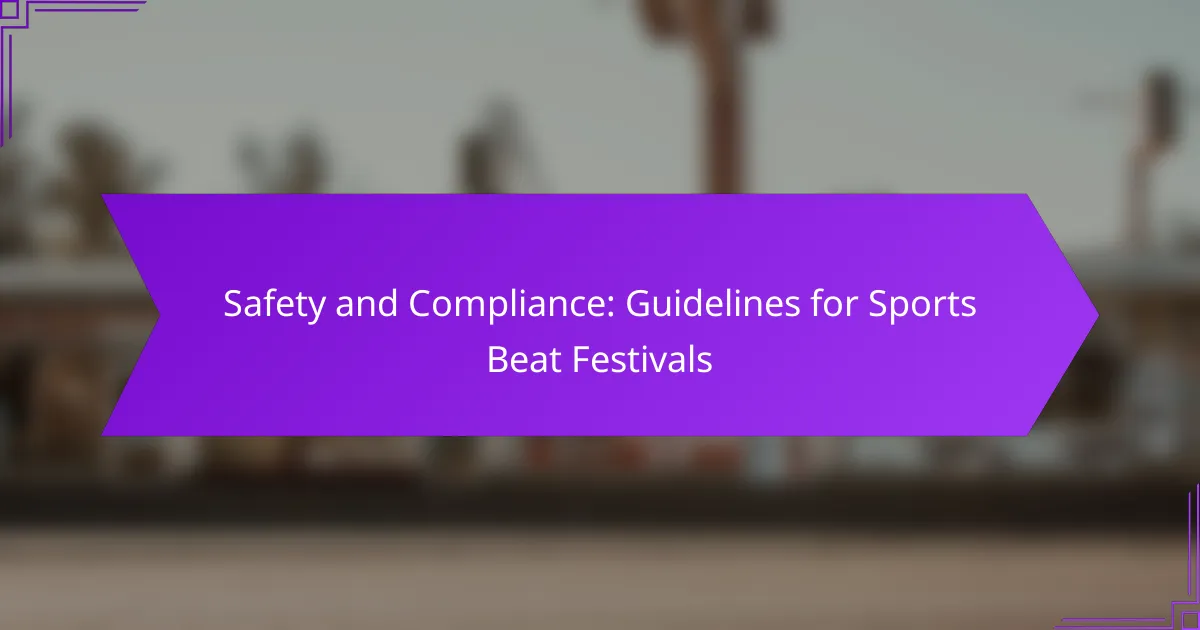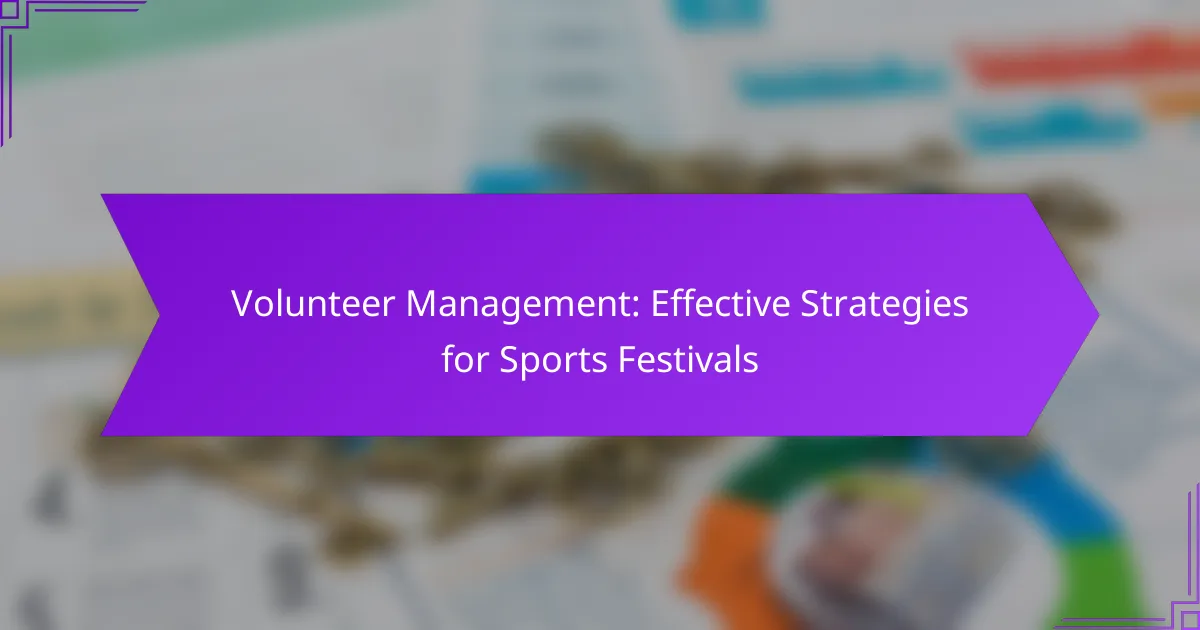Logistics play a vital role in the success of sports beat festivals, particularly in the UK, where challenges such as transportation coordination, vendor management, and site accessibility must be effectively addressed. By focusing on efficient logistics strategies, organizers can enhance attendee experiences while ensuring smooth operations throughout the event. Proper planning and communication with vendors further contribute to a seamless festival atmosphere, making it enjoyable for all participants.
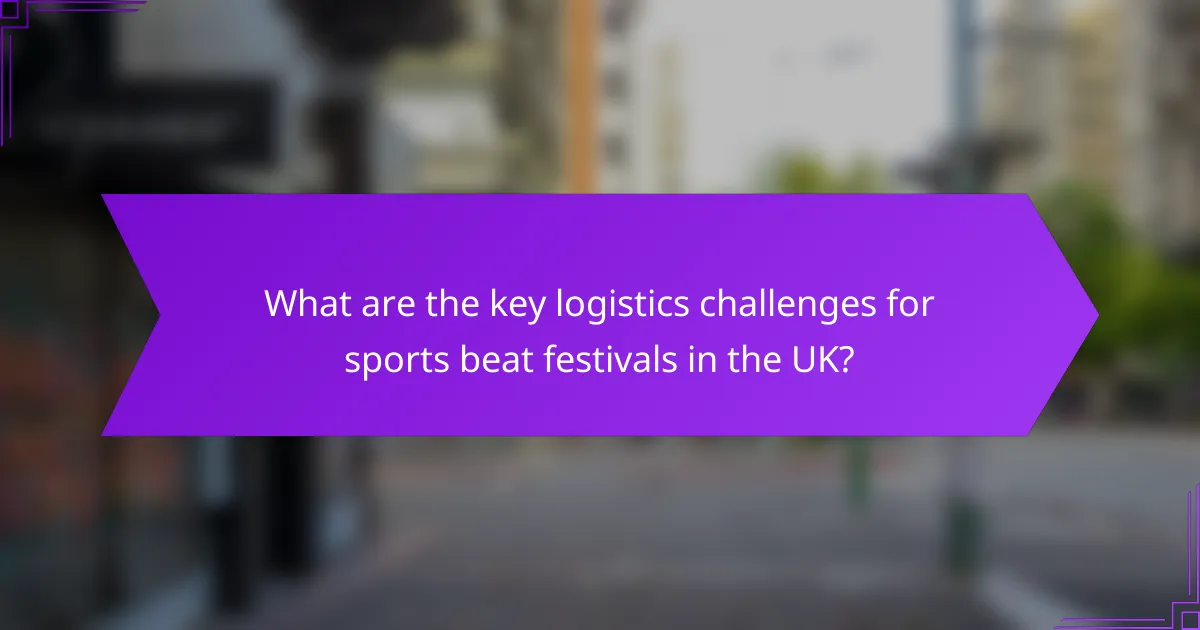
What are the key logistics challenges for sports beat festivals in the UK?
Sports beat festivals in the UK face several logistics challenges, including transportation coordination, vendor management, site accessibility, and weather contingency planning. Effectively addressing these issues is crucial for ensuring a smooth and enjoyable experience for attendees and participants alike.
Transportation coordination
Transportation coordination is vital for managing the influx of attendees, vendors, and participants. Organizers should consider multiple transport options, including public transit, shuttle services, and parking facilities. Establishing clear signage and communication can help streamline the flow of traffic and reduce congestion.
It is advisable to work closely with local transport authorities to ensure that adequate services are available on the festival dates. Providing real-time updates on transport options can enhance the experience and minimize delays.
Vendor management
Effective vendor management is essential for a successful festival. This includes selecting reliable vendors, negotiating contracts, and ensuring compliance with health and safety regulations. Organizers should create a detailed vendor schedule to manage setup and breakdown times efficiently.
Regular communication with vendors before and during the event can help address any issues that arise. Consider implementing a vendor checklist to ensure all requirements are met, from permits to equipment needs.
Site accessibility
Site accessibility is crucial for accommodating all attendees, including those with disabilities. Ensure that the venue complies with local accessibility regulations, providing ramps, designated seating, and accessible restrooms. Clear pathways should be established to facilitate movement throughout the festival grounds.
Conducting an accessibility audit before the event can help identify potential barriers and allow for necessary adjustments. Providing information on accessibility options in promotional materials can also enhance attendee experience.
Weather contingency planning
Weather contingency planning is essential for outdoor festivals, as unpredictable weather can impact attendance and safety. Organizers should develop a comprehensive plan that includes alternative venues, shelter options, and communication strategies for severe weather alerts.
Establishing a clear protocol for evacuations and safety measures can help mitigate risks. It is wise to monitor weather forecasts leading up to the event and have a flexible approach to scheduling activities based on conditions.

How to optimize transportation for sports beat festivals?
To optimize transportation for sports beat festivals, focus on efficient logistics that enhance attendee experience while minimizing congestion. Key strategies include leveraging local transport services, implementing shuttle services, and coordinating with public transport systems.
Utilize local transport services
Engaging local transport services can streamline access to festival venues. This may involve partnerships with taxi companies, ride-sharing apps, or local bus services that cater to the festival crowd. Ensure that these services are well-promoted to attendees through marketing materials and social media.
Consider offering discounts or incentives for using local transport options, which can encourage attendees to leave their cars behind. This not only reduces traffic but also supports local businesses.
Implement shuttle services
Shuttle services provide a direct and convenient way for attendees to reach festival locations from key points, such as hotels or parking areas. Establish a clear schedule and route map to minimize wait times and confusion. Frequent shuttles during peak hours can significantly enhance the overall experience.
Evaluate the cost-effectiveness of shuttles versus other transport options. Offering free or low-cost shuttles can be a strong draw for attendees, particularly in urban areas where parking is limited.
Coordinate with public transport
Coordinating with local public transport authorities can improve accessibility for festival-goers. Work with transit agencies to extend service hours or increase frequency during the festival period. This ensures that attendees can easily travel to and from the event without hassle.
Promote public transport routes and schedules through festival channels, including websites and social media. Providing clear information on how to use public transport to reach the festival can enhance attendance and reduce parking demand.
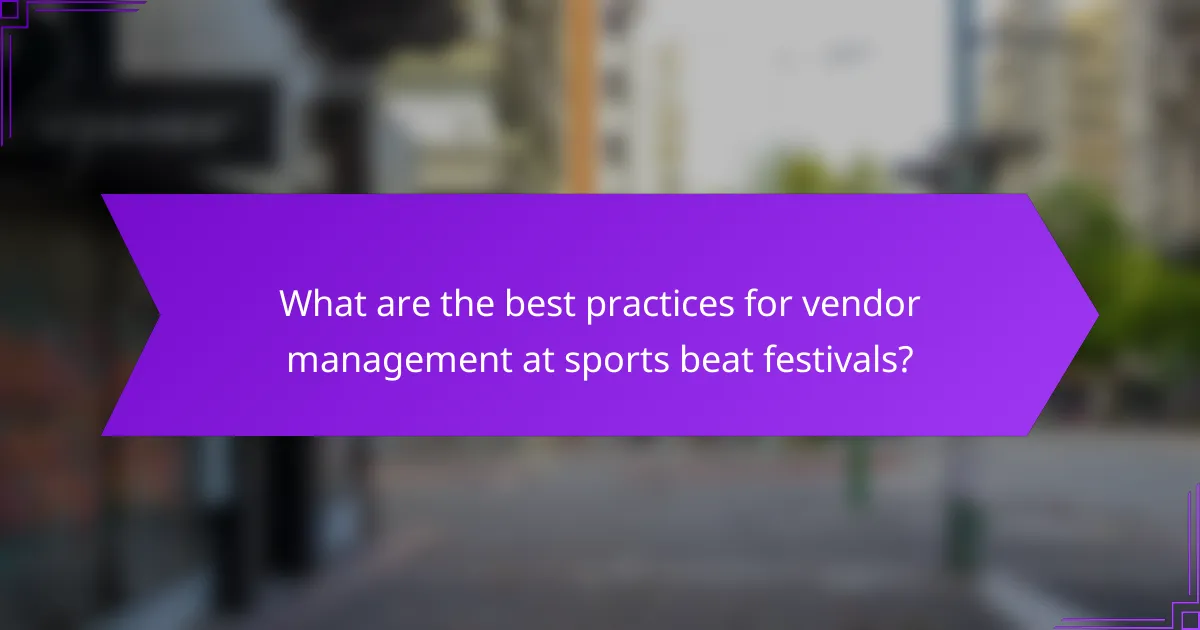
What are the best practices for vendor management at sports beat festivals?
Effective vendor management at sports beat festivals involves establishing clear expectations, maintaining open lines of communication, and regularly evaluating vendor performance. These practices ensure that vendors meet their obligations and contribute positively to the festival experience.
Establish clear contracts
Clear contracts are essential for defining the roles, responsibilities, and expectations of each vendor. Contracts should outline payment terms, service delivery timelines, and any specific requirements related to health and safety regulations. This clarity helps prevent misunderstandings and ensures accountability.
Include clauses for contingencies, such as cancellation policies and liability coverage, to protect both parties. A well-structured contract can serve as a reference point throughout the festival, making it easier to address any issues that arise.
Regular communication
Maintaining regular communication with vendors is crucial for successful management. Schedule check-ins before, during, and after the festival to discuss any concerns, updates, or changes. This proactive approach fosters a collaborative environment and allows for quick resolution of potential problems.
Utilize various communication tools, such as emails, messaging apps, or project management software, to keep all parties informed. Clear communication helps ensure that vendors are aligned with the festival’s goals and can adapt to any last-minute changes effectively.
Performance evaluations
Conducting performance evaluations after the festival provides valuable insights into vendor effectiveness. Assess vendors based on criteria such as service quality, adherence to timelines, and overall contribution to the festival atmosphere. This evaluation can inform future vendor selections and improve overall festival management.
Consider gathering feedback from festival attendees and staff to gain a comprehensive view of each vendor’s performance. Use this information to create a report that highlights strengths and areas for improvement, helping to refine vendor management strategies for future events.

How to ensure site accessibility for attendees?
Ensuring site accessibility for attendees involves creating an environment that accommodates individuals with disabilities. This includes adhering to regulations, providing accessible routes, and ensuring clear communication through signage.
Plan for ADA compliance
Planning for ADA compliance is crucial for any event venue. This means adhering to the Americans with Disabilities Act standards, which outline requirements for accessible facilities, including restrooms, seating, and pathways. Regular audits can help identify areas needing improvement.
Consider consulting with accessibility experts to evaluate your site and implement necessary changes. This proactive approach not only enhances the attendee experience but also mitigates potential legal issues.
Designate accessible routes
Designating accessible routes ensures that all attendees can navigate the venue comfortably. This includes creating clear pathways that are free from obstacles and are wide enough for wheelchairs or mobility devices. Routes should connect key areas such as entrances, restrooms, and seating areas.
Utilizing temporary ramps and ensuring surfaces are even can greatly improve accessibility. Regularly inspect these routes during the event to maintain safety and usability.
Provide adequate signage
Providing adequate signage is essential for guiding attendees with disabilities. Signs should be clear, large, and placed at appropriate heights for visibility. Use symbols and braille where applicable to assist those with visual impairments.
Consider using color contrast to enhance readability and ensure that directional signs are placed at key decision points throughout the venue. This helps attendees navigate without confusion and enhances their overall experience.
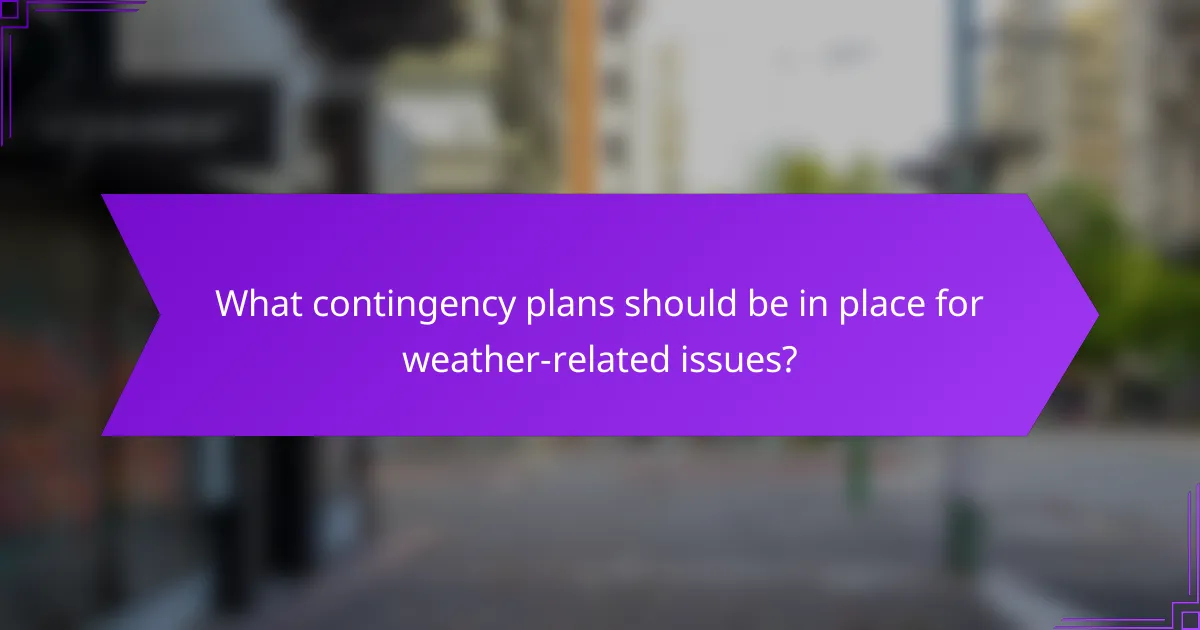
What contingency plans should be in place for weather-related issues?
Contingency plans for weather-related issues at sports beat festivals should include strategies for potential disruptions caused by adverse weather conditions. These plans ensure safety and minimize operational impacts, allowing for a quick response to changing circumstances.
Develop an emergency response plan
An emergency response plan outlines the steps to take in the event of severe weather, such as storms or extreme heat. Key components should include evacuation routes, designated safe areas, and procedures for notifying attendees and staff.
Consider conducting regular drills to familiarize staff with the emergency response plan. This preparation can significantly reduce confusion and enhance safety during actual weather events.
Establish communication protocols
Effective communication protocols are crucial for disseminating information quickly during weather-related emergencies. Utilize multiple channels, such as social media, text alerts, and public address systems, to reach attendees promptly.
Ensure that all staff members are trained on these communication methods and understand their roles in relaying information. Regular updates should be provided to keep everyone informed about weather conditions and safety measures.
